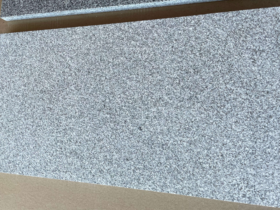We all use mixers. Every day they “betray” us water from the water supply in the bathroom or in a shower, in the kitchen. The shape of some models does not surprise anyone, I mean classic two -handed mixers. The mechanism is simple, reliable, and the repair is completely inexpensive. Inside such mixers, there may be either ordinary crane bouxes or their modern relatives-ceramic.
The box of the box
What is the difference? Ordinary crane bouxes look like this. The principle of operation is very simple: when rotating the flywheel (mixer handle), a washer with an elastic band (it is located in the lower part of the case), for example, it lowers and the rubber gasket locks the hole from which water comes. The water is closed. Rotate the pen in the other direction — the puck rises and the elastic band opens the way to the water. Just like 100 years ago. Repair, usually boils down to the replacement of the elastic band, which over time, physically wear out. In order to completely open or close the water, you have to make several revolutions a flywheel.
If there is no desire to twist the flywheel for a long time, buy a mixer with a ceramic crane-box. The main difference is that for the opening or closing of the crane you need to make only half a turn (in some models of a quarter-turn) of a flywheel. As a result, time is saved, you can quickly adjust the water temperature.
Ceramic axle box
Such a crane-boux is like like this.
The structure is completely different, only the case is similar. In such a crane-bokes, the stream of water is regulated not by the puck with an elastic band, but by ceramic plates. In a nutshell it looks like this: imagine two ceramic “pyataka”, they are located above each other. There is a hole in one and in the other. “Pyataki” are tightly pressed against each other, and the lower motionless, and the upper is connected to the flywheel and rotates around the axis. The meaning, I think, is clear, holes coincide — there is water, do not match — does not go. These ceramic plates of “Pyataki” are thoroughly polished to a perfectly smooth state, otherwise there will be a gap between the plates and there will be no tightness. In case of breakdown, ceramic crane bouxes are not repaired and are subject to complete replacement. That is, the repair of such mixers will cost much more than ordinary.
Ceramic cartridge
The next candidate for consideration is a modern ceramic cartridge for joystick (or one -armed) mixers. He looks something like this. Why something like that? Yes, because there are many manufacturers, and constructively cartridges can seriously differ from each other. They are cleaned with the diameter, height, the method of attaching the handle itself, etc. D. The principle of operation is approximately the same as that of ceramic crane boux, only holes in ceramic “heel” are larger, and the movable plate not only rotates around the axis, but also moves back and forth. Two holes for the entrance of hot and cold water, and one opening for exit. Mixing hot and cold water occurs directly inside the ceramic cartridge. In inexpensive models of mixers, not ceramic “Pyataki” are often found, but plastic. It is clear that such a cartridge will not last long. From experience — this is up to six months maximum. And inexpensive models are very strong. And all due to savings. In serious ceramic cartridges, to reduce noise, there are special dissectors of the water flow. But this is not the limit. There are even newer models-these are the so-called hydro-ceramic cartridges, thermostatic cartridges. In general, everything will not fit in one note. I’ll write another time.













Оставить коммент.